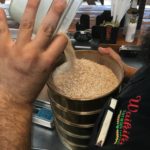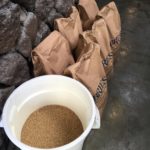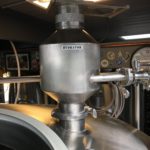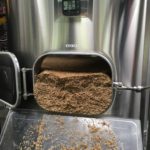lt is the heart and soul of beer. Period. So grab a beer, and let’s talk about it.
Other homebrewers and pro brewers might contend that yeast makes beer, and they would be right. Yeast makes beer what it is, but only based on the raw materials present. For example, let’s say you have a pile of very expensive hardwood. An artist or craftsman could take pieces of wood out of the pile and make a violin or carve a beautiful sculpture. I, on the other hand, could probably only make a campfire…that is, if I also had enough gasoline. The point is that the basic building blocks (malt) are the same and the artist and arsonist (Yeast) both make something different from it.
Treatment of malt in both the homebrew and commercial brewery are very similar. The grain comes out of the bag intact and must be “crushed” to expose the inside of the grain to the mash (“strike”) water. When exposed to water in the 144-1600F range, enzymes present in the malt begin to convert starch to sugars that can be consumed by our artist friend, Yeast. However, for this homebrewer, the scale of malt, how it is milled, how it’s moved to the mash tun (where it is steeped in that hot water) and how it is hydrated in a commercial brewery was an eye-opener.

Freshly ground grain goes into the sieves
First of all, the milling process was much, much bigger. On the homebrew level, most grain mills are either powered by a hand crank or turned with a 3/8 – 1/2” electric drill. Even at a relatively small brewery like the one where I am volunteering, a giant AC motor turns the mill. At the homebrew level, a big beer (think Russian Imperial Stout or Barley Wine) might use 16-20 pounds of grain for a five-gallon batch. On the commercial level of seven barrels (about 217 gallons) even a relatively small ABV beer uses 375-400 pounds of grain.
To start the milling process, we do a crush test on about 6-8 pounds of grain to see if the mill is performing the way it should. The test grain is captured in a bin and a portion removed and weighed. Once we weigh it, we put the grain in a giant, five-layer, multi-screen sieve, where it’s mechanically – and violently – shaken for a minute or two. We take the sieve apart and weigh the contents of each layer of the sieve, with particular interest in the “course grit” and “fine grit” layers. If these two comprise at least 80% of the total weight, the mill is working properly and we are ready to brew.

Grain awaiting the mill
Next step: start the mill and start the auger. Just like at the homebrew level, the mill is inertia-driven and needs to be moving before you start adding grain. Once we start adding grain to the mill hopper, we can never let it run empty, because the auger is dropping the grain through the hydrator while the hydrator is mixing very hot water (about 100F above the desired mash temperature) with the milled grain. If the grain stops, the mash gets hotter than we want it. Sounds easy enough, but the grain bags weigh 50-55 pounds and the hopper only holds about 25-30 pounds of grain, which means you have no time to open another bag. They must all be prepared and staged right next to the mill ahead of time.

The hydrator where milled grain and hot water meet
Something I did not expect about milling and mashing at the commercial level was the strict order to putting grain through the mill. Base malts (80% or more of the total malt bill) go in first and last, with the specialty malts (those to add colors, flavors or character) in the middle. This ensures that base malts are the last malt to pass through the auger, so as not to throw off the next crush test.
While one person puts bag after bag of malt through the mill, the brewer controls the water going into the hydrator, to maintain the desired temperature, while also continuously stirring the mash. Although this doesn’t sound too labor intensive, I assure you it is something to watch. No one who mashes in a mash tun that is not automated (a motor driven mash “rake”) is without blisters and calluses.

The spent grain
Once the mashing is complete, we begin the vorlauf process – recirculating the newly created sugary water (wort) through the mash to further clarify the wort. Since the husks and grain bed make an excellent filter, this part doesn’t take very long. Once the vorlauf is complete, we move the wort to the boil kettle while simultaneously adding hot water from the hot liquor tank (sadly, there is no liquor in the hot liquor tank) to the top of the mash tun to rinse out all of the useable sugar out so that it can be converted to alcohol. When the mash tun is empty, we remove the now “spent grain,” which is then responsibly recycled either into livestock feed or burger and slider rolls for the brewpub.

One thought on “Malty McMaltface and the Maltinium Falcon”